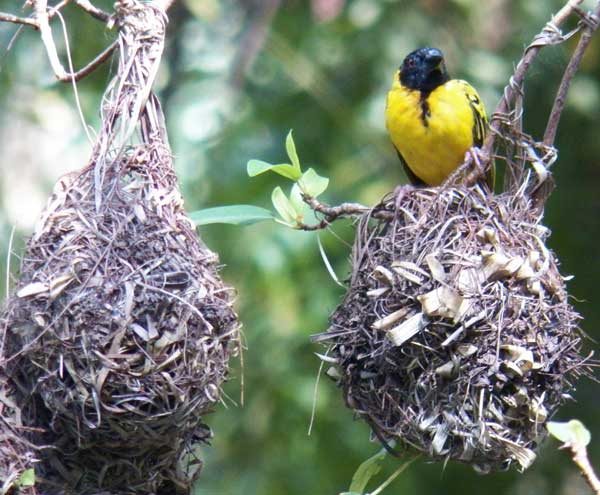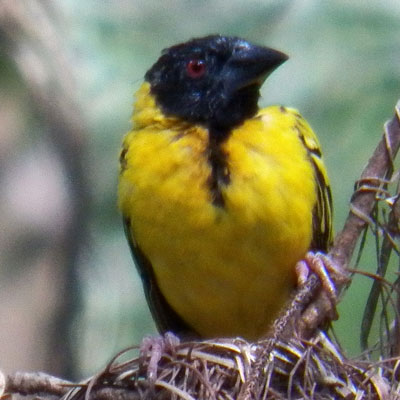Village Weaver
Ploceus cucullatus

A male Village Weaver with a pair of intricately woven nests at Bamburi Gardens, Mombasa, Kenya. January 2012.

From Wikipedia: This weaver, also known as the Black-headed Weaver, builds a large coarsely woven nest made of grass and leaf strips with a downward facing entrance which is suspended from a branch in a tree. 2-3 eggs are laid. This is a colonial breeder, so many nests may hang from one tree. The Village Weaver is a stocky 15–17 cm bird with a strong conical bill and dark reddish eyes. In the northern part of its range, the breeding male has a black head edged by chestnut (typically most distinct on the nape and chest). Towards the southern part of its range, the amount of black and chestnut diminish, and the breeding males of the southernmost subspecies only have a black face and throat, while the nape and crown are yellow. In all subspecies the breeding male has a black bill, black and yellow upperparts and wings, and yellow underparts. The non-breeding male has a yellow head with an olive crown, grey upperparts and whitish underparts. The wings remain yellow and black. The adult female has streaked olive upperparts, yellow and black wings, and pale yellow underparts. Young birds are like the female but browner on the back. Village Weaver feeds principally on seeds and grain, and can be a crop pest, but it will readily take insects, especially when feeding young, which partially redresses the damage to agriculture. The calls of this bird include harsh buzzes and chattering. It is common in much of Kenya.
Ploceidae -- Weaver and Bishop Family
Books:
- Birds of Kenya and Northern Tanzania by Zimmerman et al.
- Birds of East Africa by Stevenson and Fanshawe